How to Plant Monggo Seeds
- March 29, 2024
- 0 comment
Discover How to Plant Monggo Seeds, a guide to cultivating Vigna radiata, a nutritious legume central to Asian cuisines. This article offers a step-by-step process suitable for both gardening enthusiasts and beginners, promising a plentiful and healthy yield.
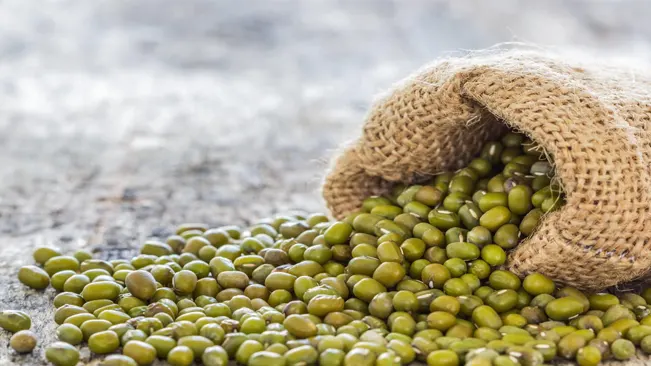
Monggo Benefits
| Benefit | Description |
|---|---|
| Nutritional Value | Monggo beans are rich in protein, which is essential for muscle building and repair. They also contain significant amounts of fiber, which aids in digestion and promotes a feeling of fullness. |
| Low in Calories | Despite their high nutrient content, monggo beans are low in calories, making them an excellent food choice for weight management. |
| Rich in Vitamins and Minerals | They are a good source of essential vitamins and minerals, including Vitamin C, potassium, magnesium, and iron, which are vital for various body functions. |
| Heart Health | The fiber and antioxidants in monggo beans can help lower bad cholesterol levels, thus reducing the risk of heart disease. |
| Blood Sugar Control | Their low glycemic index and high fiber content help regulate blood sugar levels, making them beneficial for diabetics. |
| Digestive Health | The dietary fiber in monggo beans supports healthy digestion and prevents constipation. |
| Anti-inflammatory Properties | Monggo beans contain antioxidants that have anti-inflammatory properties, helping to reduce inflammation in the body. |
| Supports Immune System | The nutrients and antioxidants in monggo beans help strengthen the immune system. |
| Easy to Digest | They are lighter and easier to digest compared to many other beans, making them a good choice for people with sensitive digestive systems. |
| Versatile in Cooking | Monggo beans can be used in a variety of dishes, including soups, stews, salads, and desserts, offering culinary versatility. |
Selecting Quality Seeds
Start with high-quality monggo bean seeds, which can be purchased from a trusted gardening store or online. Look for seeds that are whole and free from cracks or holes, as damaged seeds may not germinate effectively.
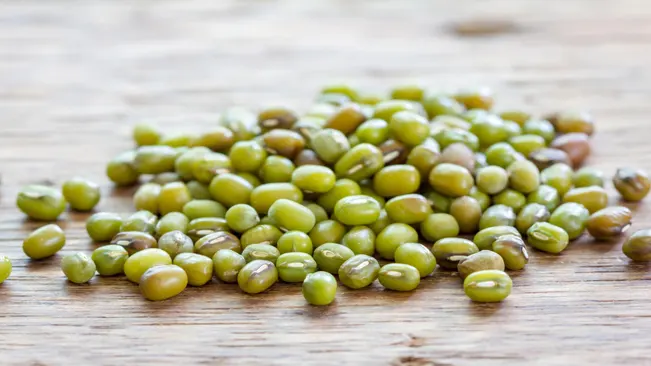
- Appearance and Texture: The best monggo bean seeds are plump, unbroken, and have a smooth surface. Avoid seeds that appear shriveled, discolored, or have visible cracks or holes, as these signs may indicate poor quality or old age. Damaged seeds are less likely to germinate or might produce weak plants.
- Seed Viability: Check the packaging for a ‘packed for’ date. Seeds are generally viable for a few years, but fresher seeds usually have a higher germination rate. If you’re unsure about the age of the seeds, you can perform a simple germination test by placing a few seeds on a moist paper towel and observing if they sprout within a few days.
- Organic vs Non-Organic: You can choose between organic and non-organic seeds. Organic seeds come from plants that were grown without synthetic pesticides or fertilizers and are ideal if you’re aiming for an organic garden. However, both types can produce healthy plants.
- Variety Selection: Monggo beans come in different varieties. Some may be more suited to your climate and soil conditions than others. Research the varieties available and select one that’s known to thrive in your local environment.
- Source of Seeds: Purchase seeds from reputable gardening stores or online vendors with good reviews. Reliable sources ensure seed quality and are likely to have a fresher, more viable stock. Additionally, they can provide valuable information on specific seed varieties and their cultivation requirements.
- Seed Treatments: Some seeds are pre-treated with fungicides or other agents to enhance their resistance to diseases. If you prefer untreated seeds, especially if you’re going for an organic approach, check the seed packet or ask the supplier.
- Storing Seeds: If you buy seeds in bulk or end up with extra seeds, store them properly to maintain their viability. Keep them in a cool, dry place, and ideally in an airtight container. Proper storage can extend their viability for future planting seasons.
Choosing the Right Time and Place
Monggo beans thrive in warm weather, so it’s best to plant them in late spring or early summer when the soil temperature is at least 18°C (65°F). They need a location that receives full sunlight for most of the day. The soil should be well-draining and rich in organic matter.

- Understanding the Importance of Timing and Climate Monggo beans are sensitive to the temperature of their growing environment. They require warm conditions not just for germination but also throughout their growth cycle. Planting them in late spring or early summer ensures that the soil has warmed up sufficiently. This is crucial because if the soil is too cold, the seeds may not germinate at all, or the growth of seedlings may be stunted. Furthermore, monggo beans have a relatively short growing period, so it’s important to maximize the warm weather for their growth and maturation.
- Why Soil Temperature Matters The ideal soil temperature of at least 18°C (65°F) is key for several reasons. First, it promotes healthy and speedy germination. Seeds planted in soil that is at this temperature will germinate more uniformly and quickly. This reduces the risk of diseases which can affect seeds and seedlings in cooler, damp conditions. Second, warm soil supports better root development, essential for the healthy growth of the plant.
- Choosing a Sunny Location Monggo beans need full sunlight for the majority of the day. This requirement is not just about the warmth from the sun but also for the light, which is crucial for photosynthesis. A location with full sun exposure ensures that the plants have enough energy to grow vigorously and produce a good yield. If the plants don’t get enough sunlight, they may become leggy, as they stretch towards the light, and this can weaken the plants.
- Soil Requirements Well-draining soil is critical to prevent waterlogging, which can lead to root rot and other fungal diseases. While monggo beans are not particularly demanding regarding soil fertility, a soil rich in organic matter can provide many benefits. Organic matter, such as compost or aged manure, improves soil structure, drainage, and aeration. It also provides essential nutrients to the plants and improves the soil’s water-retaining capacity.
Preparing the Soil
Prepare the planting area by loosening the soil to about 12 inches deep. Incorporate compost or aged manure to enrich the soil. Monggo beans do not require highly fertile soil, but adding organic matter can improve growth.
- Loosening the Soil
- Start by loosening the soil to about 12 inches deep. This step is important as it allows the roots of the monggo beans to penetrate the soil easily and access necessary nutrients. Deep loosening also improves drainage, preventing waterlogging which can be detrimental to the beans.
- Enriching the Soil with Organic Matter
- While monggo beans aren’t particularly demanding regarding soil fertility, enriching the soil with organic matter like compost or aged manure can significantly enhance their growth. Compost adds essential nutrients back into the soil and improves its structure and water retention capabilities.
- You can either mix the compost into the soil while loosening it or spread it as a top layer after loosening the soil.
- Benefits of Adding Organic Matter
- Organic matter provides a slow release of nutrients, which is beneficial for the sustained growth of monggo beans.
- It also fosters a healthy soil ecosystem, encouraging beneficial microorganisms and worms that naturally aerate the soil and contribute to nutrient cycling.
- Improves the soil’s water-holding capacity, ensuring that the roots have adequate moisture without being waterlogged.
- Checking Soil pH
- Monggo beans prefer a slightly acidic to neutral pH, typically between 6.0 and 7.0. If you’re unsure about your soil’s pH, consider testing it. You can adjust the pH by adding lime (to increase pH) or sulfur (to decrease pH) if needed.
- Preparing for Drainage
- Ensure that the soil doesn’t hold water for too long. Good drainage is key to prevent root rot and other moisture-related diseases. If your soil is heavy or clay-like, consider adding sand or organic matter to improve drainage.
- Final Touches Before Planting
- After preparing the soil, smooth out the surface and remove any large clumps, stones, or debris. This makes it easier for the monggo bean seedlings to break through the soil surface.
Planting the Seeds
Plant the monggo bean seeds about an inch deep into the soil, spacing them approximately 3 inches apart. If planting in rows, keep the rows around 20 inches apart. This spacing allows for adequate air circulation and reduces the risk of fungal diseases.
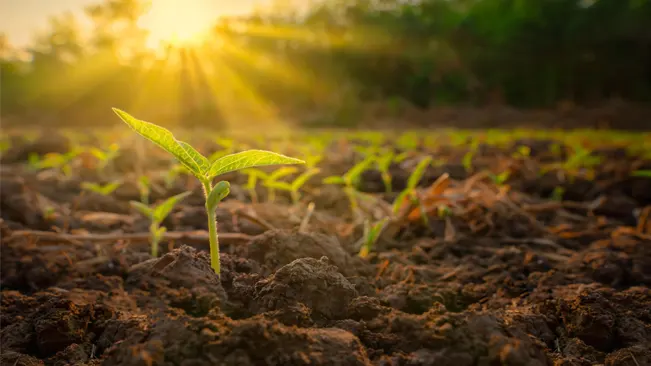
Depth and Spacing for Planting
- Depth: The seeds should be sown about an inch deep in the soil. This depth is optimal as it allows the seed enough coverage to retain moisture and warmth, which are crucial for germination, while not being so deep that the emerging seedling struggles to reach the surface.
- Spacing Between Seeds: Planting the seeds approximately 3 inches apart ensures that each plant has enough room to grow without competing for nutrients and water. It also facilitates adequate air flow around the plants, which is important for reducing the risk of diseases, especially those caused by fungi.
Row Planting Considerations
- Row Spacing: If you are planting in rows, maintaining a distance of around 20 inches between rows is recommended. This spacing allows you to walk between rows for easy maintenance, such as weeding and watering, without disturbing the plants.
- Orientation: It’s also beneficial to orient your rows north to south, if possible. This orientation maximizes sunlight exposure as the sun moves across the sky, ensuring even sunlight distribution for all plants.
Soil Preparation
- Before planting, make sure the soil is well-prepared. It should be loose and well-draining to prevent waterlogging, which can rot the seeds. If your soil is heavy or clayey, consider amending it with organic matter like compost or aged manure to improve its texture and nutrient content.
Watering
Monggo beans, like many plants, have specific watering needs that vary throughout their growth cycle. Initially, when seeds are planted, adequate moisture is crucial to trigger germination. Once the plants establish themselves, their water requirements change.
Watering During Germination
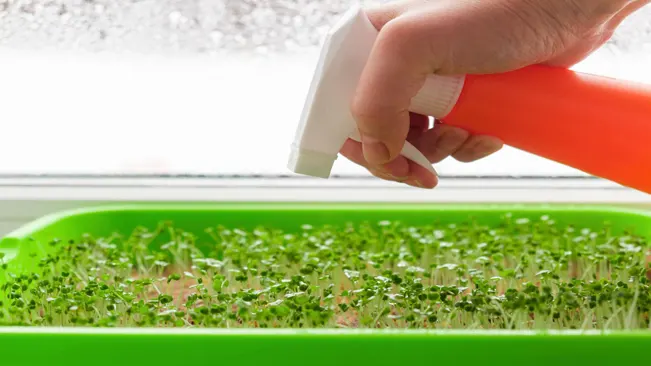
- Initial Watering: Right after planting the seeds, it’s important to water them gently but thoroughly. This initial watering helps settle the soil around the seeds and ensures that the moisture reaches the seed depth.
- Consistency: During the germination phase, which typically lasts for a few days to a week, the soil should be kept consistently moist. This doesn’t mean the soil should be soggy, but it should feel like a wrung-out sponge.
- Frequency: Depending on the weather conditions (like temperature, humidity, and wind), you may need to water the seeds daily or every other day. The goal is to prevent the soil from drying out completely, as this can hinder or stop the germination process.
Watering During Early Growth Stages
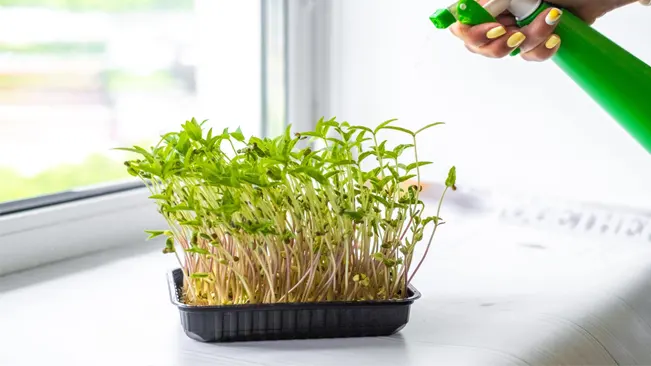
- Reduced Frequency: Once the monggo plants have germinated and started growing, they still require consistent moisture, but the frequency of watering can be reduced. Overwatering can be as detrimental as under-watering because it can lead to root rot and other fungal diseases.
- Monitoring Soil Moisture: Check the top inch of soil. If it feels dry to the touch, it’s time to water. If it still feels moist, wait a day or two before checking again.
- Watering Technique: Water the plants at the soil level, rather than from above, to avoid wetting the foliage. Wet leaves can attract fungal diseases and pests.
Adjusting Watering As Plants Mature
- Observing Plant Signals: As monggo plants grow, they will start to develop a deeper root system. Mature plants are somewhat drought-tolerant and can handle slightly drier soil conditions.
- Reducing Watering Pre-Harvest: If you are growing monggo beans for dry beans, reduce watering as the pods mature and begin to dry. This helps in the drying process of the beans inside the pods.
Caring for the Plants
As the monggo beans grow, keep the area free of weeds and provide support if necessary. Monggo plants are generally bushy and may not require staking, but if they grow tall or look weak, stakes can help.
Weed Management
- Regular Weeding: Keep the area around the monggo plants free of weeds. Weeds compete with the monggo plants for nutrients, water, and sunlight. Regularly removing weeds can ensure your monggo beans get the resources they need to grow.
- Mulching: Applying a layer of organic mulch around the plants can help suppress weeds, retain soil moisture, and regulate soil temperature.
Supporting the Plants
- Staking: While monggo plants are typically bushy and can support themselves, they sometimes grow taller and may need support. If the plants appear leggy or start leaning, provide stakes or trellises to help them stay upright.
- Gentle Tying: If you use stakes or trellises, gently tie the plants to the support using soft plant ties or old strips of fabric. Avoid tying them too tightly as this can damage the stems.
Dealing with Pests and Diseases
Monggo beans are susceptible to pests like aphids and diseases such as powdery mildew. Inspect plants regularly and use organic pesticides or fungicides if needed. Maintaining good air circulation and avoiding wetting the foliage can help prevent these issues.
Dealing with Pests
- Common Pests: Monggo beans are particularly susceptible to aphids, small sap-sucking insects. Aphids can cause leaf curling and can also spread diseases.
- Control Measures: To control aphids, you can use a strong spray of water to dislodge them from the plants. Introducing beneficial insects like ladybugs, which feed on aphids, is an organic way to control these pests. If the infestation is severe, organic insecticidal soaps or neem oil can be effective.
Dealing with Diseases
- Powdery Mildew: This is a common fungal disease that appears as white, powdery spots on leaves. It thrives in humid conditions and can hinder photosynthesis.
- Control Measures: To prevent powdery mildew, ensure good air circulation around the plants and avoid overhead watering to keep the foliage dry. If you notice signs of powdery mildew, remove affected leaves to prevent its spread. Applying sulfur-based or copper-based fungicides can be effective in controlling powdery mildew. However, it’s important to use these products according to the manufacturer’s instructions.
Preventive Measures
- Crop Rotation: Avoid planting monggo beans in the same spot year after year as this can increase the risk of soil-borne diseases.
- Sanitation: Keeping the garden area clean and free of plant debris can help minimize the risk of pests and diseases.
- Mulching: Using mulch helps in maintaining soil moisture and temperature, which can reduce the stress on plants, making them less susceptible to pests and diseases.
Monitoring and Regular Inspection
- Regularly inspect your monggo bean plants for signs of pests and diseases. Early detection is key to effective management.
- Look for changes in leaf color, spots, or deformities which might indicate a problem.
- By monitoring your plants closely, you can take timely action to mitigate any issues, ensuring a healthy and productive crop of monggo beans.
Harvesting
Monggo beans are ready to harvest in about 60 to 90 days after planting. They can be harvested young as green beans or allowed to mature and harvested as dry beans. Pick green beans when they are firm and about 3 to 4 inches long. For dry beans, wait until the pods are dry and brown before harvesting.
Timing
- Monggo beans typically reach harvest-ready maturity between 60 and 90 days after planting. The exact timing can depend on the variety of monggo bean, the growing conditions, and your preference for how you want to consume them.
Harvesting as Green Beans

- If you prefer to harvest monggo beans when they are still young and tender (similar to green beans), you should monitor their size and firmness. The ideal time to pick them is when they are about 3 to 4 inches long and feel firm to the touch. At this stage, the beans inside the pod are still developing, and the pods are tender and edible. Harvesting at this stage is ideal for dishes where the entire pod is consumed.
Transition to Dry Beans
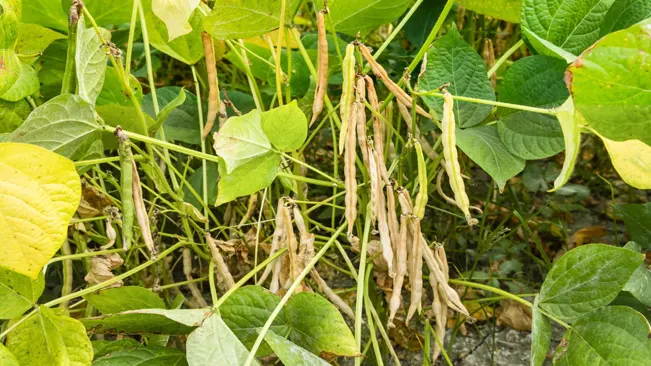
- If you’re aiming for dry beans, the approach changes. After the green bean stage, the pods will continue to grow and eventually start to yellow and dry out. This is a sign that the beans inside are maturing and drying as well.
Harvesting Dry Beans
- The key indicator for harvesting dry beans is the appearance and texture of the pods. Wait until the pods become fully dry and turn a brown color. The pods should feel papery, and you might even hear the beans rattling inside when shaken. This indicates that the beans have dried sufficiently and are ready for storage.
- Whether harvesting for green or dry beans, use a gentle hand to avoid damaging the plant. You can either pinch the beans off with your fingers or use a pair of scissors or pruning shears.
Post-Harvest Processing for Dry Beans
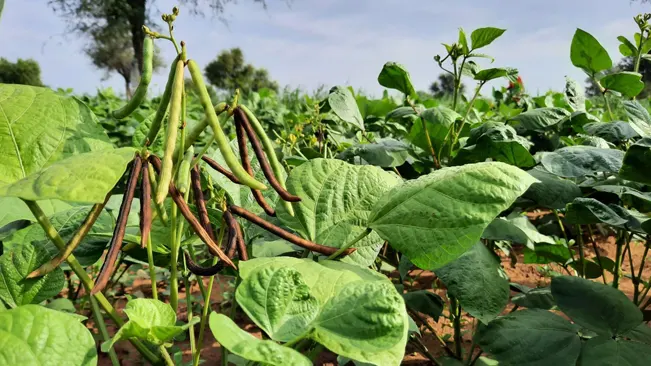
- Drying: After harvesting dry beans, it’s essential to ensure they are thoroughly dried before storage to prevent mold and spoilage. Spread the beans out in a warm, dry place with good air circulation for a few days.
- Shelling: Once completely dry, shell the beans by breaking open the pods and removing the beans inside.
- Storage: Store the dried beans in an airtight container in a cool, dry place. They can be stored for many months and used as needed for cooking.
Use in Cuisine

- Monggo beans are versatile in the kitchen. Fresh green monggo beans can be used in stir-fries, salads, and as a side dish. Dried beans are excellent for longer cooking dishes like stews, soups, and traditional Asian desserts.
Conclusion
Growing monggo beans is a delightful and rewarding experience. With their minimal care requirements and versatile uses in the kitchen, they’re a great addition to any home garden. Whether you’re a seasoned gardener or a beginner, monggo beans are a wonderful choice for an easy and productive gardening project.
FAQs (Frequently Asked Questions)
- What is the best time to plant monggo seeds?
- Plant monggo seeds in late spring or early summer when the soil temperature is at least 18°C (65°F). They need warm weather to germinate effectively.
- Plant monggo seeds in late spring or early summer when the soil temperature is at least 18°C (65°F). They need warm weather to germinate effectively.
- How deep should I plant monggo seeds?
- Plant the seeds about 1 inch deep in the soil.
- Plant the seeds about 1 inch deep in the soil.
- What kind of soil is best for monggo seeds?
- Monggo beans prefer well-draining soil that’s rich in organic matter. They do not require highly fertile soil, but adding compost can improve growth.
- Monggo beans prefer well-draining soil that’s rich in organic matter. They do not require highly fertile soil, but adding compost can improve growth.
- How much space do monggo plants need?
- Space the seeds about 3 inches apart, and if you’re planting in rows, keep the rows about 20 inches apart.
- Space the seeds about 3 inches apart, and if you’re planting in rows, keep the rows about 20 inches apart.
- Do monggo plants need a lot of sunlight?
- Yes, they need a location that receives full sunlight for most of the day.
- Yes, they need a location that receives full sunlight for most of the day.
- How often should I water monggo seeds?
- Water the seeds gently but thoroughly after planting. Provide consistent moisture, especially during germination and early growth stages, but avoid overwatering.
- Water the seeds gently but thoroughly after planting. Provide consistent moisture, especially during germination and early growth stages, but avoid overwatering.
- Do I need to fertilize monggo plants?
- Monggo beans generally do not require additional fertilizer if you’ve enriched the soil with compost. Over-fertilizing can decrease yield.
- Monggo beans generally do not require additional fertilizer if you’ve enriched the soil with compost. Over-fertilizing can decrease yield.
- How do I protect monggo plants from pests and diseases?
- Regularly inspect plants for pests like aphids and diseases such as powdery mildew. Use organic pesticides or fungicides if needed, and maintain good air circulation.
- Regularly inspect plants for pests like aphids and diseases such as powdery mildew. Use organic pesticides or fungicides if needed, and maintain good air circulation.
- When are monggo beans ready to harvest?
- Monggo beans are ready to harvest in about 60 to 90 days after planting. You can harvest them young as green beans or let them mature and harvest as dry beans.
- Monggo beans are ready to harvest in about 60 to 90 days after planting. You can harvest them young as green beans or let them mature and harvest as dry beans.
- Can I grow monggo beans in containers?
- Yes, monggo beans can be grown in containers. Ensure the container is deep enough for root development and has good drainage.

Kristine Moore
Forestry AuthorI'm Kristine Moore, a seasoned garden landscaping professional with over 30 years of experience. My extensive career has been dedicated to transforming outdoor spaces into stunning, sustainable landscapes. With a deep understanding of horticulture, design principles, and environmental stewardship, I have become a respected figure in the field, known for creating harmonious, visually appealing, and eco-friendly gardens. My commitment to excellence and continuous learning in landscaping trends and techniques has solidified my reputation as an expert in garden design and implementation.









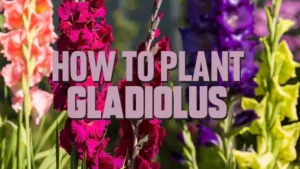


Leave your comment